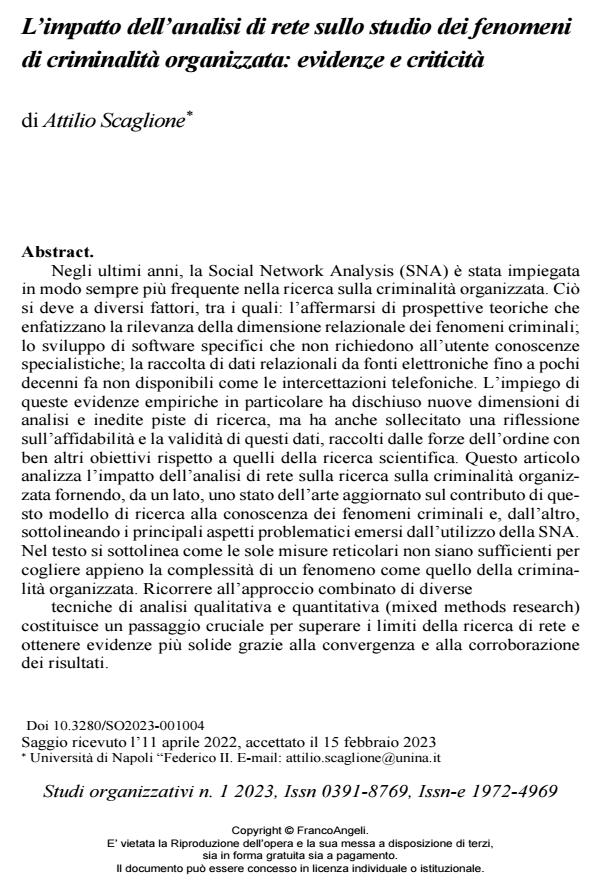The impact of network analysis on the study of organized crime phenomena: evidence and criticisms
Journal title STUDI ORGANIZZATIVI
Author/s Attilio Scaglione
Publishing Year 2023 Issue 2023/1
Language Italian Pages 24 P. 60-83 File size 261 KB
DOI 10.3280/SO2023-001003
DOI is like a bar code for intellectual property: to have more infomation
click here
Below, you can see the article first page
If you want to buy this article in PDF format, you can do it, following the instructions to buy download credits

FrancoAngeli is member of Publishers International Linking Association, Inc (PILA), a not-for-profit association which run the CrossRef service enabling links to and from online scholarly content.
In recent years, Social Network Analysis (SNA) has become in-creasingly prevalent in research on organized crime. This is due to sev-eral factors, including the emergence of theoretical perspectives that emphasize the importance of the relational dimension of criminal phe-nomena, the development of user-friendly software for SNA, and the availability of relational data from electronic sources such as wiretap-ping. While the use of this empirical evidence has opened up new ave-nues of analysis and research, it has also raised questions about the re-liability and validity of data collected by law enforcement for investi-gative purposes rather than scientific research. This article examines the impact of network analysis on organized crime research, providing an up-to-date assessment of the contribution of this research model to the understanding of criminal phenomena, as well as highlighting the main problematic aspects associated with the use of SNA. The article argues that network measures alone are insufficient to fully capture the complexity of organized crime. A mixed methods approach that com-bines different qualitative and quantitative analysis techniques is nec-essary to overcome the limitations of network research and to obtain more robust evidence through the convergence and corroboration of results.
Keywords: Network analysis, criminal networks, organised crime, mafia, wiretapping, mixed methods research.
- A cento passi dal magazzino. Il sodalizio anti-sindacale tra impresa e criminalità organizzata. Un caso di studio estremo nel settore logistico Tea Maistro, Anna Mori, Marco Guerci, in STUDI ORGANIZZATIVI 1/2025 pp.67
DOI: 10.3280/SO2025-001003
Attilio Scaglione, L’impatto dell’analisi di rete sullo studio dei fenomeni di criminalità organizzata: evidenze e criticità in "STUDI ORGANIZZATIVI " 1/2023, pp 60-83, DOI: 10.3280/SO2023-001003